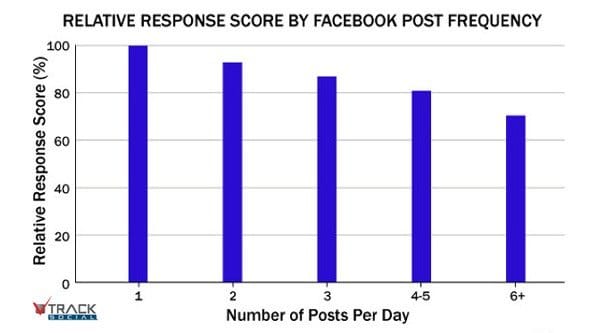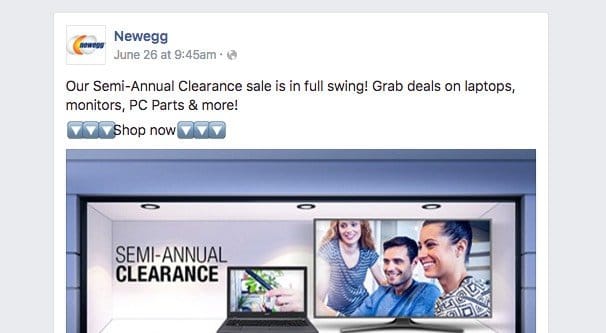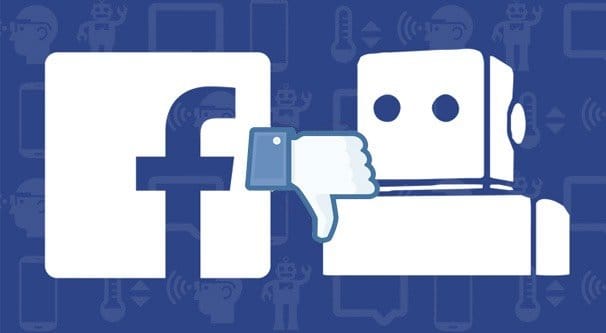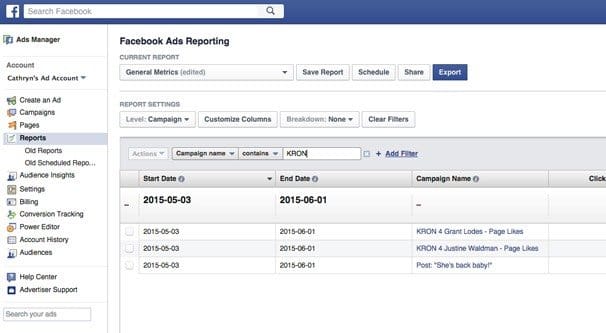 Written by ContentPowered.com
Written by ContentPowered.com
Reach is a big problem on Facebook. It has been on the decline for years, and marketers have had to struggle to keep their levels up when that same effort could be spent on growth in another market.
Facebook themselves addressed the problem, citing two main reasons for the decline in reach. The first is simply that there are so many people posting so much content that the competition is naturally driving down visibility. When the average user would see 1,500 posts per day and that number is filtered to 300, the rest of those posts languish with minimal visibility.
The second reason is that Facebook’s algorithm has grown increasingly strict in what it shows to whom. Think about it like EdgeRank’s affinity scores kicked up to 11. Beneficial engagement will enter a cycle of positive reinforcement and boost your reach, while being ignored or negative engagement will drop you like a rock. The days of slow slopes are over.
Reach numbers can seem apocalyptic. All the way back in 2012 the average page reach was something like 16%. These days it hovers closer to 6%, with large pages – over half a million followers – can drop as low as 2%.
Add on top of that the fact that just because a user sees a post doesn’t mean they’re going to engage. If you have 100,000 followers, 6% reach means only 6,000 of them are going to even see your posts. How many of those people are going to click, like, share, or comment on the post? Certainly not 6,000.
So, part of the reason your posts aren’t getting any likes is simply due to the nature of the site you’re using. However, there are certainly some things you can do better or avoid doing in order to improve the chances of earning engagement.
1. Your Content Doesn’t Inspire Engagement
When you’re browsing Facebook, what do you do? As a user, I mean. You probably visit your main feed and scroll down a ways, checking out what your friends ate and your cousin’s new baby, that sort of thing. You decline a game request, you accept another, you keep scrolling, and maybe you reach some posts you’ve seen before. You might refresh the page and start at the top to see anything new, or you might shrug and leave.
How many of those posts do you like, share, comment on, or otherwise engage with? How many links did you click? Not many, right? It’s not often that people go through and engage with every post.
The average user spends about a few seconds on each post before getting bored and moving on. You don’t have a lot of time to capture the attention of the users browsing their feeds. If your post isn’t compelling, they aren’t going to do more than skim it.
2. You’re Not Posting Often Enough
One of the biggest limiting factors for Facebook’s algorithm is time. Posts have weight based on their type, which you can control by posting the right kinds of posts. Posts have weight based on their engagement, which is why engagement is so important. Posts also have weight according to how recently they were posted. The longer it has been since a post went up, the less visible it will be, until it has all but disappeared. A bit of engagement can give it a boost, but it won’t last, and you can’t keep an old post going forever.
Finally, posts have weight according to the affinity between you and the viewer. When a user engages with a post, clicks a link, or otherwise interacts with your content in a positive way, it makes them more likely to see more of your content in the future. If they ignore your posts, they see less of them over time.
This means if you’re not posting often enough, you’re letting that affinity fade. When you finally do post, your reach is down because no one has engaged with you in a while. You’re stuck until you foster enough engagement to get back to where you were.
3. You’re Posting Too Often
The inverse of the previous problem is posting too often. The issue here is two-fold. First and most obvious is that if you’re posting a lot, and users see too many of your posts, they might decide to report you for spamming. This is particularly likely to happen if you’re posting very similar content over and over. If three ads for your ebook show up in my feed, I’m at best unfollowing you.
The second and more insidious, invisible issue is that EdgeRank is only going to show a couple of your posts to people at any given time. If you post six times in three days, the average follower is only going to see maybe two of those. The other four might as well be invisible unless they go to visit your page.
You won’t be able to see this in an obvious way, because it’s random which of your posts are shown to whom. This means all six of your posts will have relatively equal reach, just lower reach than if you had posted, say, four times in the same time span.
4. You’re Not Offering Incentives
What reason do people have to engage with your posts? You need to find something, and it’s not going to be out of the goodness of their hearts. Most people don’t understand how Facebook works and don’t know that engagement is a good thing for you.
The first option is to provide value in your content. The tricky part here is that most people don’t think of that as tangible value. The value you give to them via your blog is a given. They expect it.
The second option is to run promotions. Coupon codes, exclusive sales, and other forms of value that they can get when they shop with you are generally pretty great. The idea isn’t necessarily to offer a great deal; it’s to prove that you offer exclusive deals, so people follow you and engage with you so they can be sure they see them.
A related option is to run contests, which have value but force the user to jump through some hoops to get it. Generally the people who enter contests are going to be your most engaged users, but will be a smaller subset of your users than the people who redeem promotions.
5. Your Posts are Technically or Creatively Lacking
Is your content boring? Well, I’m sure you’re going to say it’s not, but your users will be the judge of that. Bland, basic content, statistics with no analysis, walls of words, plain text posts; these are all types of content your users just don’t care to see.
On the technical side of things, you need to make sure your posts work. Don’t use internet chatspeak or abbreviations. Heck, avoid acronyms unless you’re certain users know what they mean. Avoid using hashtags unless they’re a funny punchline, and avoid all typos as much as you can. Even a simple post can have a typo slip in and go unnoticed, and it hurts your credibility.
6. You Don’t Foster Engagement
Posting content that attracts engagement is one thing, but if people leave comments and questions, and they never get answers, they’re going to lose faith in the entire concept. Why would they want to post when they can be pretty sure that you’re not reading a word they say?
In general, you will get a few types of comments. Here’s how to respond to each of them.
- Spam. Delete these and, if the user is following you, block and report them.
- Basic “thanks” comments. Safe to ignore, though the occasional you’re welcome can be nice.
- Insightful comments. These are the start of conversations and require some thought to reply to, but can foster great user engagement as people respond to you and the commenter.
- Angry comments. These tend to be berating or insulting. If they have a valid complaint, go through customer service to get it worked out. If they’re just angry, feel free to remove their posts.
7. You’ve Accumulated the Wrong Kinds of Followers
The only people who see your posts are the people who engage with your brand. If the people following you are not the kind of people who have anything to do with your brand, you’re in for a bad time.
There are a couple reasons why this might be the case. The first is buying bulk fans from shady bot resellers. These folks sell you plenty of followers, thousands for the dollar, but they’re just getting bots or clickfarms to do the following. These accounts will never engage, or even really see your posts. They just hurt you.
The second is running ads without targeting. This broad open audience may seem great in that you get a ton of exposure for very low costs, but who are those people? Most of them won’t follow you, and the ones that do are just as likely to be clickfarmers than real people.
The third is doing something that causes your focus to shift. A lengthy downtime followed by a rebranding or a shift in conceptual focus can mean your old audience is virtually valueless. This is why a rebrand should be considered very carefully.
8. You’re Not Posting Media
Media is not the #1 way to your users hearts. PostPlanner studied that and can say it with certainty. However, that’s not to say you should completely stop posting images and videos in favor of links. Rather, it means you should focus much of your energy on links, but spice them up with media.
Photo posts have been going a bit downhill ever since link posts got a larger thumbnail. However, video is still going strong on the site; perhaps stronger than ever. Facebook is trying to compete with YouTube for video fame, and they’re doing it by having laxer standards for what constitutes views and engagement for the videos.
I like to use media posts as a way to curate content while reserving link posts primarily for myself. This allows me to funnel most of my traffic to my sites, but still fill in extra slots with media posts.
9. You’re Not Paying
At the end of the day, 6% reach, which drops as your page grows, is not sustainable as a business. You put a ton of work into boosting up your audience, but so few of them ever matter than it seems like a waste of time. You might as well go to Instagram and Twitter instead, right?
The problem here is that Facebook has progressed beyond the other social networks. Organic networking on Facebook is so minimal these days that it’s hard to justify. An investment of cash – even something as small as a few dollars a day – is still much better. You get a lot more mileage out of Facebook when you pay for some ads, trust me on this one.
10. A Challenger Appeared
Sometimes your lack of likes isn’t your fault at all. You may have a competitor in your niche that’s doing what you do, but better. They’ve attracted your best posters and your most engaged fans, and now you’re left with nothing but the dregs. You still get a little engagement, but it’s not enough to live on.
There’s no real good way to take care of the competition like this. You can’t exactly hold an assassination to get them shut down, figuratively or literally. The way the world works encourages competition.
Your only solution in this case is to out-do them the way they were out-doing you. Run better ads with more of a budget. Attract a more finely tuned audience. Use competitive intelligence to try to steal their audience. However you do it, just be slick about it; direct assaults just won’t work, and they make you look bad to boot.





